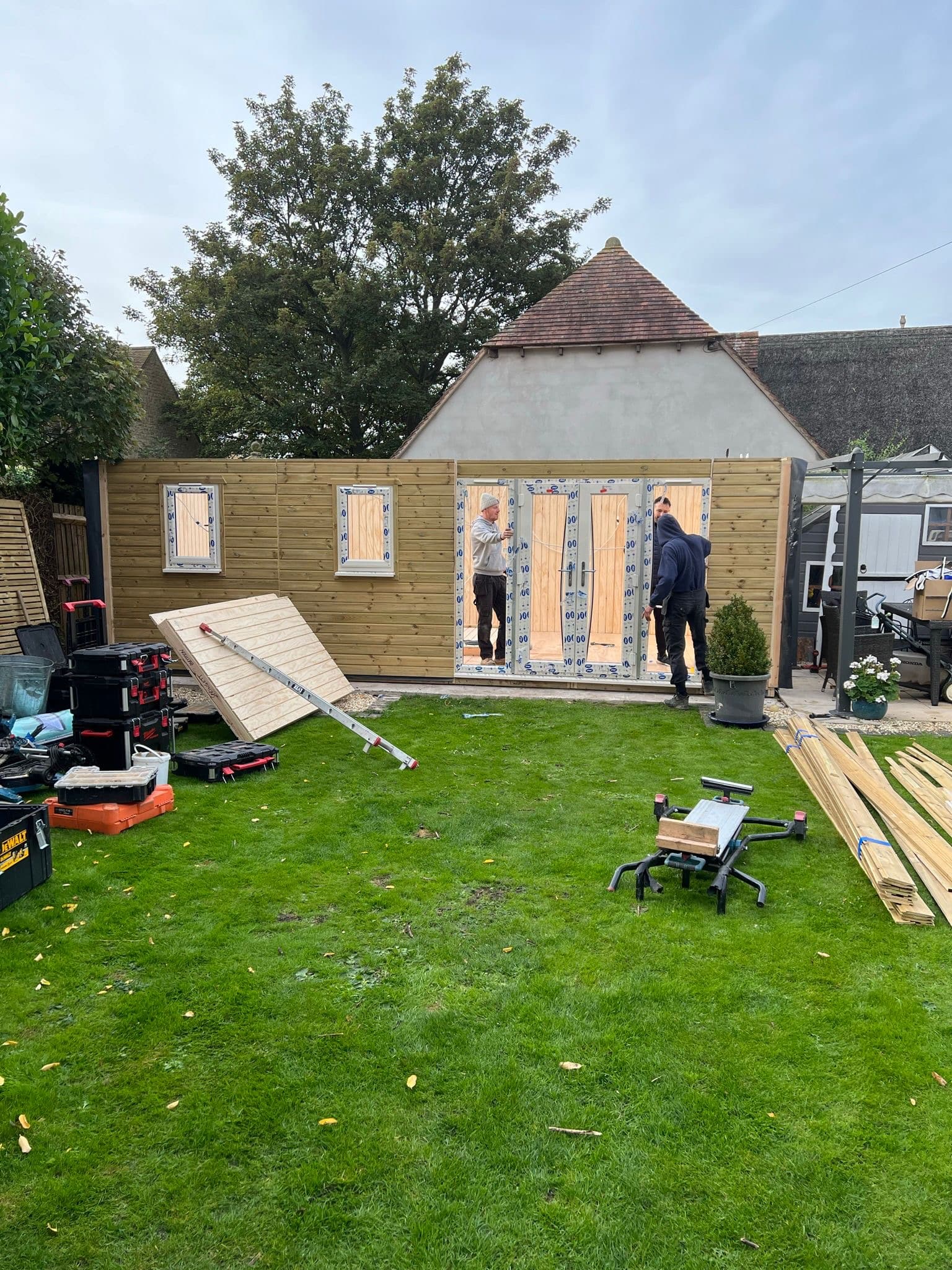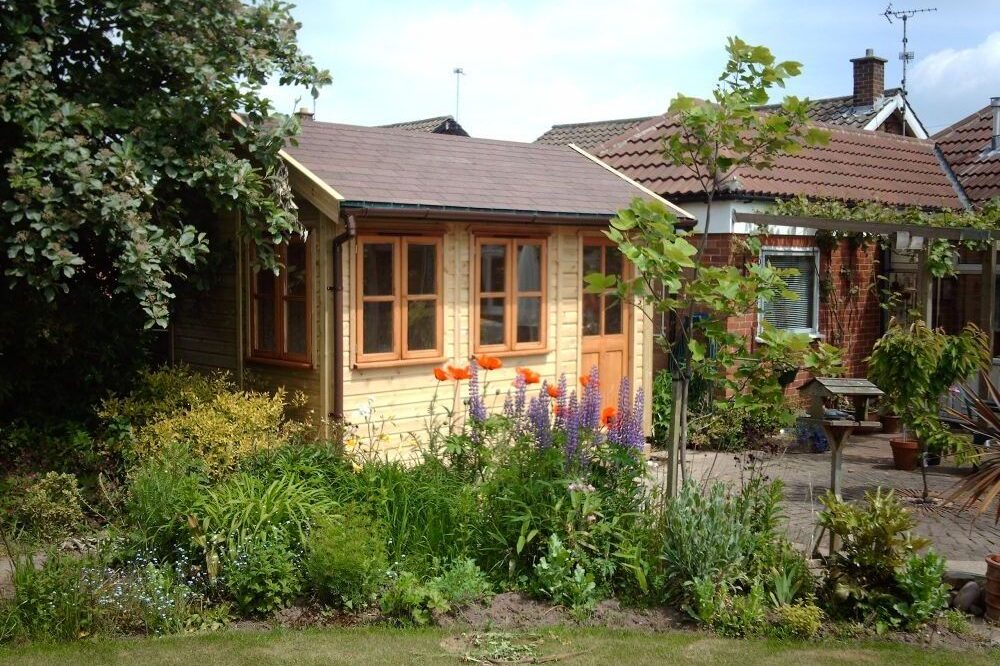
The curved garden room is becoming a defining feature of modern outdoor design. Its soft edges and flowing form reflect a growing desire for buildings that feel calm, elegant, and well-matched to their surroundings.
More than a style choice, this shift in shape points to a future where outdoor rooms are as thoughtful as the homes they sit beside.
The Rise of the Curved Garden Room
In recent years, outdoor buildings have changed. The basic square or rectangular structure is no longer the only option. Homeowners and designers alike are drawn to shapes that feel more organic. The curved garden room meets this need, offering a smoother visual that feels more connected to nature.
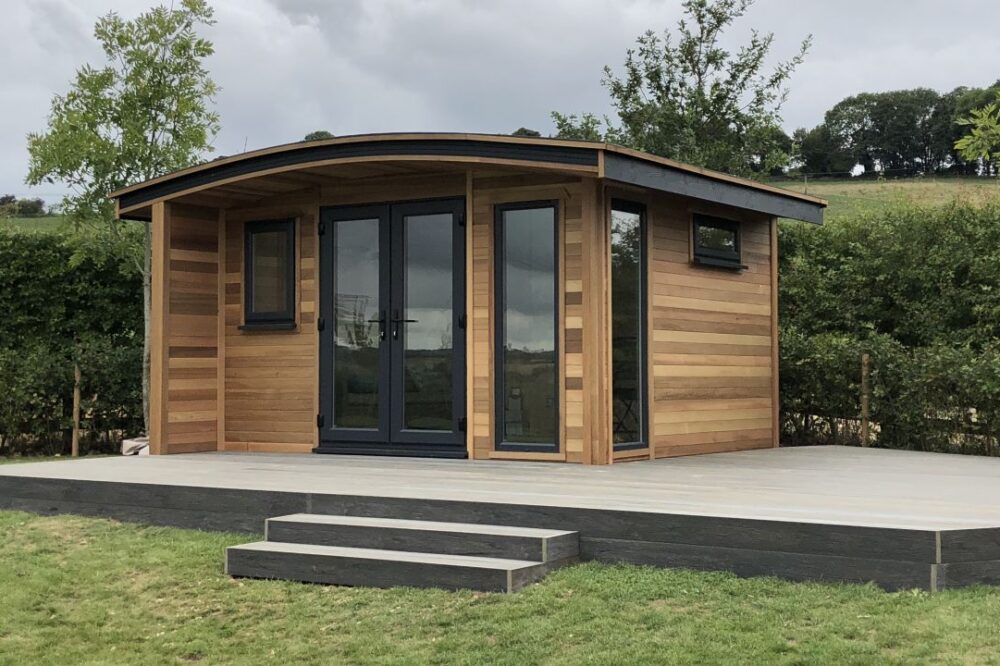
Curves soften the hard edges of traditional buildings. They create a sense of natural harmony, helping the structure blend into its surroundings. In gardens filled with movement and life, this shape feels more at home. It supports a modern aesthetic, replacing boxy builds with something visually lighter and more welcoming.
The rise in curved designs is not simply about appearance. It's about how these shapes make people feel. Whether used for work, relaxation, or creativity, a curved garden room brings a calm energy that many now look for in outdoor spaces.
What Makes a Curved Roof Garden Room Unique?
A curved roof garden room offers practical and visual strengths that set it apart. Unlike flat or pitched roofs, a curved form supports efficient water runoff and improves airflow. This keeps the structure dry, fresh, and more comfortable throughout the seasons.
Visually, the curve adds instant appeal. It lifts the profile of the building without overpowering the garden. The continuous line from wall to roof creates a sleek, modern look that feels balanced and uncluttered. This design works well in both urban and rural settings, making it a flexible choice for a wide range of gardens.
The curve also allows for more creative interior layouts. The ceiling feels higher and more open, improving the sense of space without increasing the footprint. This makes a curved roof garden room a smart choice for those who value both form and function.
Functional Benefits of a Curved Roof
The curved roof shape supports durability. Rainwater runs off smoothly, helping to reduce damp issues and extend the life of the materials.
It also provides better insulation. The curve reduces cold spots and allows for more even heat distribution, which improves comfort and lowers energy use. In windy conditions, the curved surface reduces resistance, offering greater weather protection throughout the year.
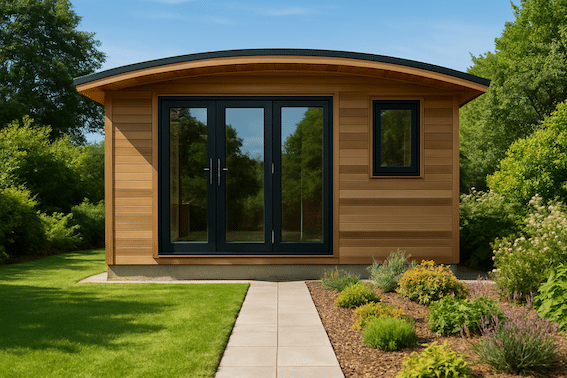
Contemporary Garden Office Design Trends
As the shift to remote work continues, the contemporary garden office has become a must-have for many households. These are not temporary structures or makeshift corners. They are purpose-built spaces for focus, comfort, and long-term use.
One trend that stands out is the use of soft, flowing shapes. A curved structure supports this approach. It mirrors patterns found in nature, which helps to create a calmer, more relaxing workspace. This aligns with growing interest in biophilic design — where natural elements guide how spaces are shaped.
Minimalist architecture also plays a role. Curves reduce visual noise and remove the sharpness often found in box-shaped builds. A contemporary garden office built with a curved form can feel more like a retreat than a room, offering a better setting for deep work or creative thought.
These spaces aren’t just for work either. They support wellness, reflection, and leisure, making them a valuable extension of the home.
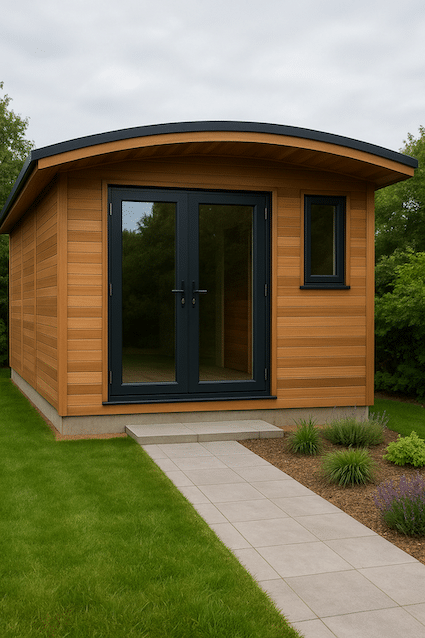
Architectural Garden Rooms: Where Form Meets Function
Architectural garden rooms bring design and purpose together. A curved form is often key to this balance. It removes sharp lines, adding a softness that works well in natural surroundings.
Compared to standard straight-edged builds, curved structures look less harsh and more flowing. This helps them blend with the trees, sky, and garden shapes around them. The result is a garden room that complements its environment rather than standing apart from it.
These are not only practical spaces. Architectural garden rooms use shapes to influence how people feel inside them. The curve makes the room feel open and welcoming — a contrast to the closed-in feeling some traditional buildings create. It’s a small change in shape that makes a big difference in experience.
Why the Future is Curved: Style, Sustainability & Innovation
Curved garden rooms are more than a design trend. They represent a smart shift in how we build for outdoor living. Their shape allows for stronger materials, better insulation, and improved building techniques. These features support long-term use and lower environmental impact.
The curve also helps reduce waste in construction. Fewer joints, simpler joins, and smoother lines often lead to more efficient builds. When paired with sustainable materials, this creates a strong, lasting space that requires less upkeep.
As people demand more from their outdoor buildings — in function, comfort, and visual appeal — the curved shape continues to stand out. It suggests innovation without overcomplicating the design. For many, that’s the right mix of progress and simplicity.
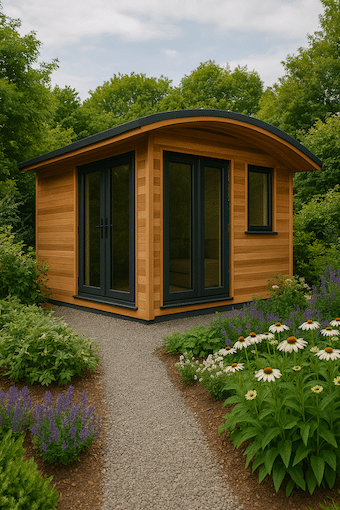
Explore Curved Roof Garden Rooms with UK Garden Office
UK Garden Office creates curved roof garden rooms that suit modern needs. These designs combine comfort, performance, and strong visual appeal.
To learn more or see examples, visit our curved roof garden room page. You can explore design ideas, compare options, or speak to our team about your next project.

